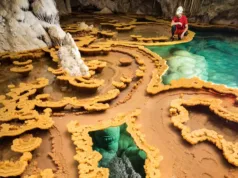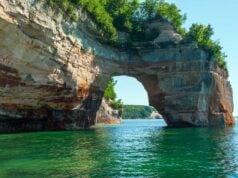The Kyaiktiyo Pagoda, also known as the Golden Rock, is a renowned Buddhist pilgrimage site located in Mon State, Myanmar. Perched precariously on the edge of a granite boulder atop Mount Kyaiktiyo, the pagoda is an iconic symbol of both spiritual devotion and natural wonder. It is considered one of the most sacred sites in Myanmar and draws thousands of pilgrims and tourists every year.
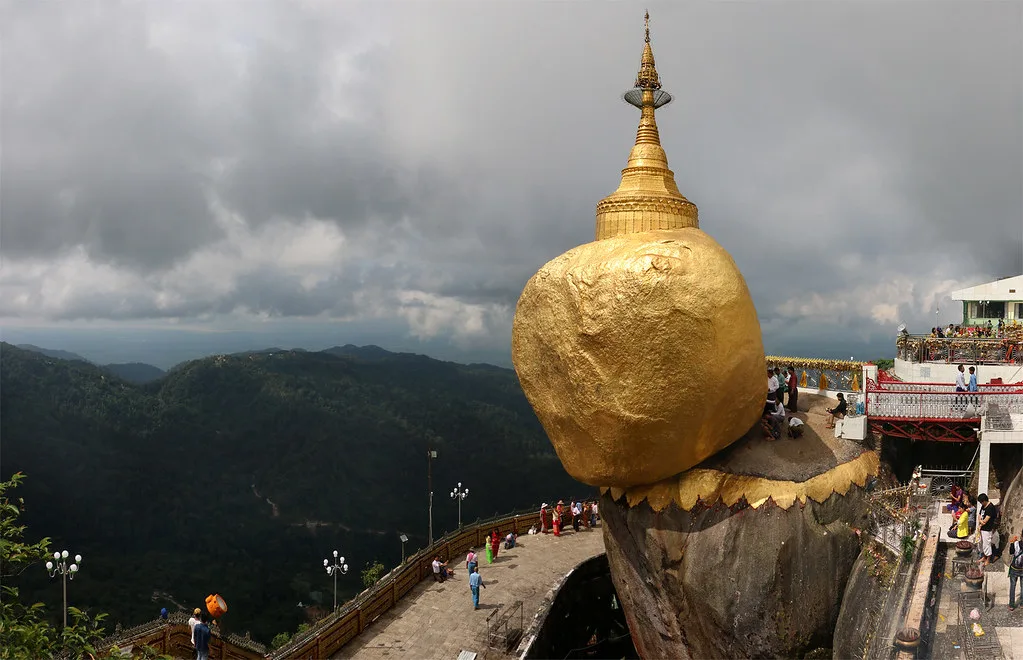
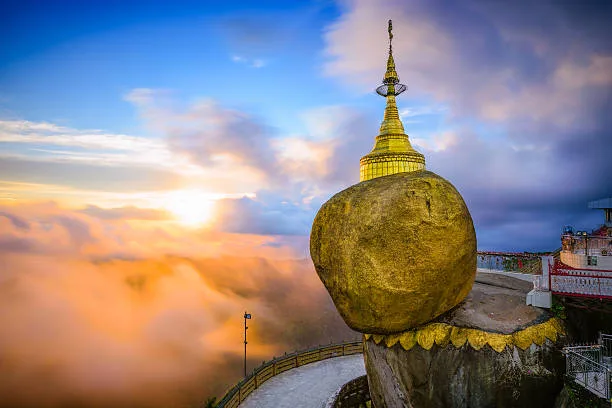
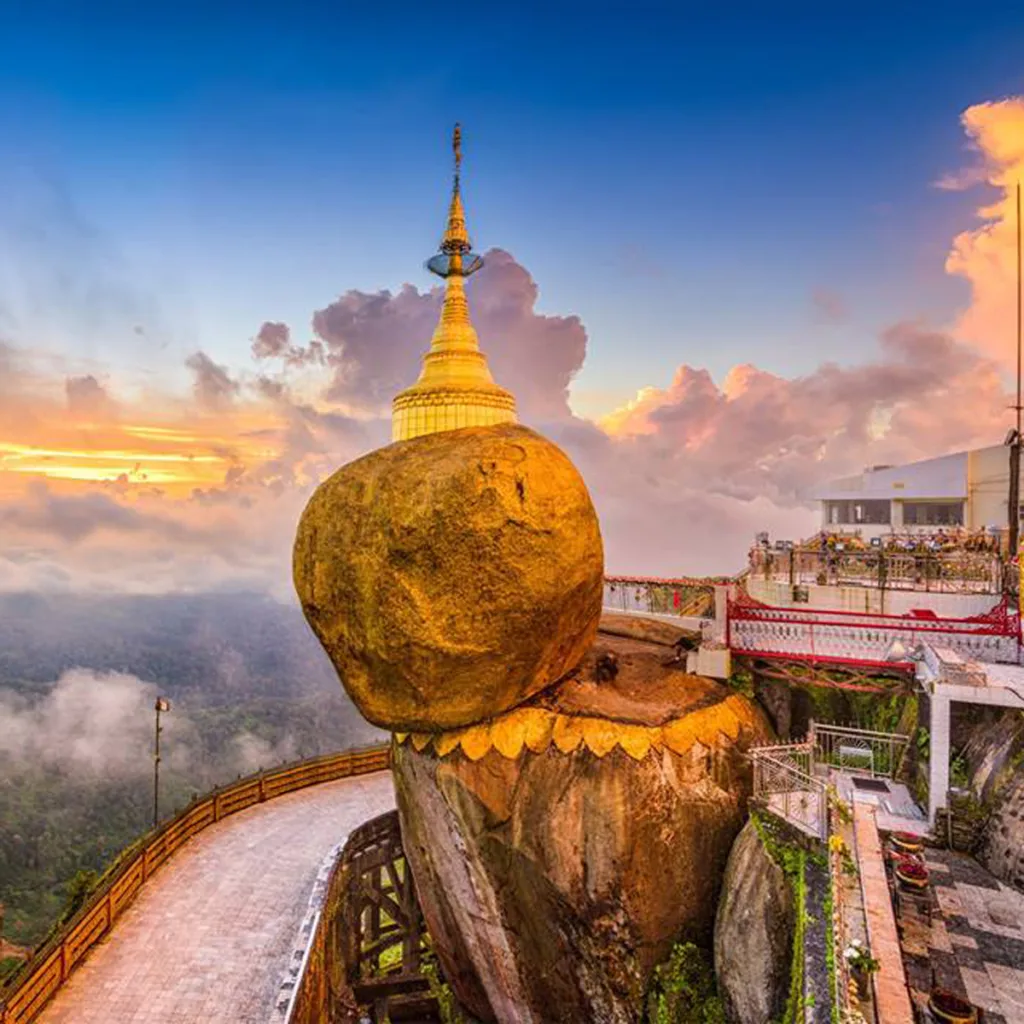
The pagoda is known for its unique construction and religious significance. It is believed to enshrine a hair relic of the Buddha, making it a place of deep veneration for Buddhists. The striking sight of the Golden Rock seemingly defying gravity as it balances on the edge of a cliff has contributed to its popularity and mystique. Pilgrims often visit to pay their respects, make offerings, and perform rituals, believing that these acts will bring them blessings and good fortune.
The geological feature that makes the Kyaiktiyo Pagoda so extraordinary is the natural rock formation upon which it sits. The Golden Rock itself is a large boulder that appears to be precariously balanced on the edge of a cliff. What makes this geological phenomenon even more intriguing is that the boulder is covered in gold leaf applied by devotees over the centuries, giving it a shimmering golden appearance.
Geologically, the Kyaiktiyo Pagoda is situated on the Eastern Yoma mountain range in Myanmar. The rock that the pagoda rests on is a massive granite boulder, which is not native to the immediate area. It is believed that the boulder was transported to its current location by a combination of natural geological processes and ancient tectonic activity. The exact mechanism of how the boulder came to rest on the edge of the cliff remains a subject of geological speculation and study.
Over time, the boulder has become a symbol of resilience and devotion, seemingly defying the laws of physics as it balances on the cliff. The pagoda complex around the Golden Rock includes various structures and platforms where visitors can circumambulate and pay their respects. The natural beauty of the surrounding landscape and the awe-inspiring sight of the Golden Rock have made it a must-visit destination for both spiritual seekers and travelers interested in unique geological wonders.
The Kyaiktiyo Pagoda, or Golden Rock, is not only a remarkable religious site but also a geological marvel that continues to captivate people from around the world. Its combination of spiritual significance and unique natural setting makes it a truly special and enchanting destination.
Geological Formation and Composition
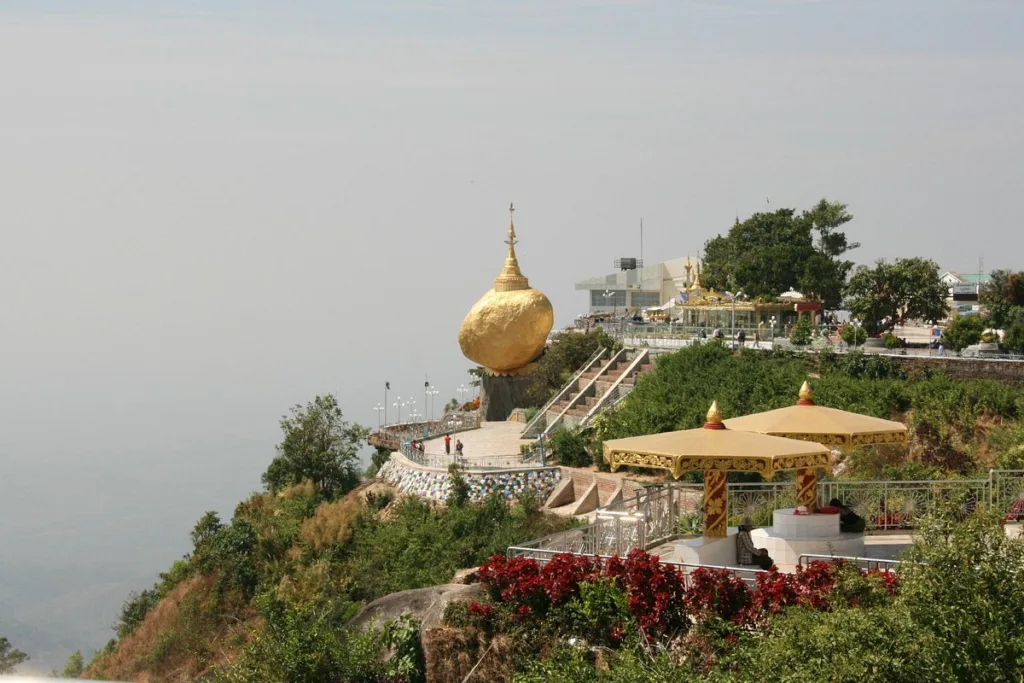
Description of the Golden Rock’s composition: The Golden Rock, upon which the Kyaiktiyo Pagoda rests, is primarily composed of granite, a coarse-grained igneous rock. Granite is made up of three essential minerals: feldspar, quartz, and mica. These minerals give granite its characteristic speckled appearance and varying colors, often ranging from pink and gray to black.
Explanation of the geological processes that led to the formation of the rock: The formation of the Golden Rock and its granite composition can be attributed to the process of igneous intrusion. This geological process begins deep within the Earth’s crust, where molten magma slowly cools and solidifies over an extended period of time. As the magma cools, it crystallizes, and the individual mineral crystals grow. Eventually, this solidified magma forms large masses of igneous rock, like granite.
The granite that makes up the Golden Rock likely formed millions of years ago through the cooling and solidification of molten material deep within the Earth’s crust. Over time, the surrounding rocks eroded and weathered away, gradually exposing the granite beneath the surface. Erosion and tectonic forces then played a role in shaping the landscape and revealing the unique geological feature of the Golden Rock.
Discussion of the geological forces that contribute to the rock’s balanced position: The balanced position of the Golden Rock atop the cliff is a result of a combination of geological factors, including weathering, erosion, and tectonic activity. While the exact mechanism of how the boulder came to rest in its precarious position is not fully understood, the following processes likely played a role:
- Weathering and Erosion: Over millions of years, the surrounding rocks and soil were eroded away by natural weathering processes, gradually exposing the granite boulder. Erosion from wind, water, and other environmental factors would have contributed to shaping the landscape and creating the cliff edge upon which the Golden Rock sits.
- Tectonic Activity: The region around the Kyaiktiyo Pagoda is geologically active, with ongoing tectonic forces shaping the landscape. Earthquakes, uplift, and other tectonic movements could have contributed to the tilting and positioning of the boulder over time.
- Frost Wedging: Freeze-thaw cycles, where water enters cracks in the rock and expands upon freezing, can exert significant pressure and potentially contribute to the rock’s movement and balance.
It’s important to note that the Golden Rock’s precarious position is not a result of a single, isolated event, but rather the culmination of geological processes occurring over an immense span of time. The natural balance of the rock has become a symbol of wonder and spiritual significance, drawing pilgrims and tourists alike to witness this remarkable geological phenomenon.
Stability and Engineering Considerations
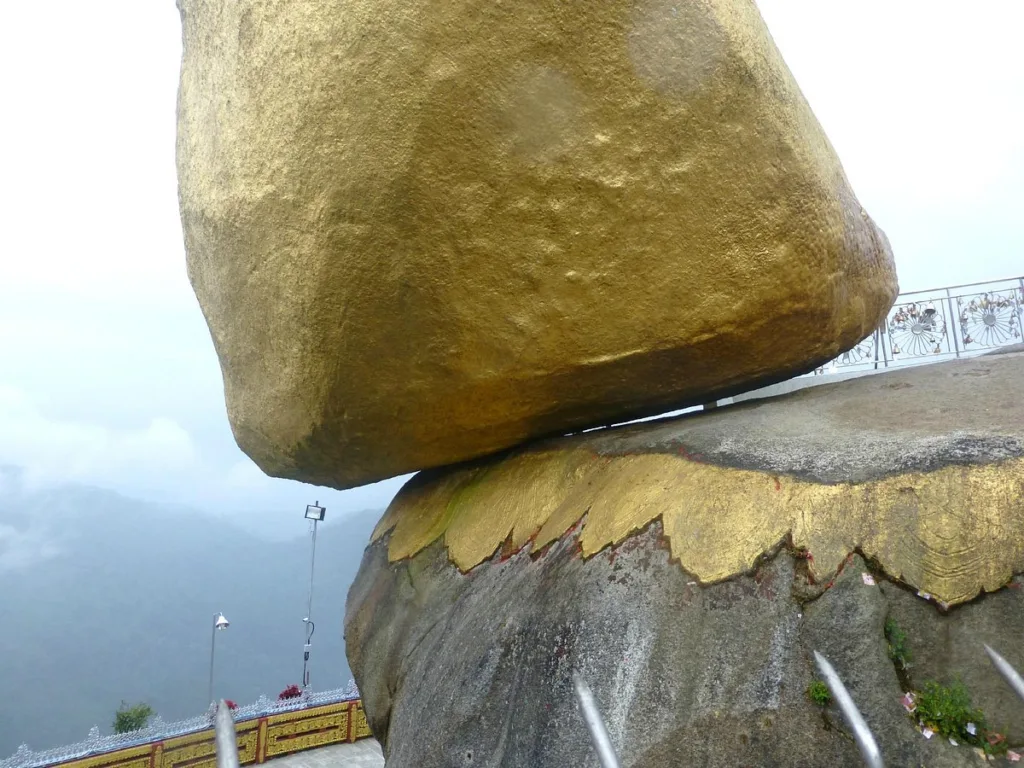
Stability of the Golden Rock and Factors Preventing Movement: The stability of the Golden Rock atop the cliff is a fascinating geological and engineering phenomenon. Despite its seemingly precarious position, several factors contribute to its resistance to movement:
- Interlocking Geology: The granitic composition of the Golden Rock often includes minerals with irregular shapes that can interlock, creating friction and mechanical stability. This interlocking structure helps prevent the boulder from easily sliding or rolling off the cliff.
- Natural Base: The base of the Golden Rock likely has a broader, stable contact area with the underlying rock, distributing the weight and minimizing the risk of tipping.
- Ancient Foundation: The rock’s position has been relatively stable for centuries, suggesting that its balance has been maintained over a long period. This long-term stability implies that it has successfully resisted significant geological and environmental forces.
Engineering Challenges and Considerations for Maintaining Stability: While the Golden Rock has maintained its balance naturally for a long time, the construction of the Kyaiktiyo Pagoda atop it introduces engineering challenges that require careful consideration:
- Structural Load: The weight of the pagoda and the pilgrims who visit it places a load on the Golden Rock. Engineers must ensure that this load is distributed evenly to prevent undue stress on any specific point.
- Seismic Activity: The region is prone to earthquakes, which can potentially disrupt the balance of the rock. Engineers need to design the pagoda to withstand seismic forces and evaluate the impact of earthquakes on the stability of the rock.
- Weathering and Erosion: Ongoing weathering and erosion processes could weaken the structural integrity of the rock. Monitoring and maintenance are crucial to address any signs of deterioration.
- Human Activity: The movement of pilgrims, tourists, and maintenance personnel on the rock can impact its stability. Managing foot traffic and ensuring that any interventions don’t compromise the rock’s natural balance are important considerations.
Human Interventions and Structural Modifications: To enhance the stability of the Kyaiktiyo Pagoda and ensure the safety of visitors, some human interventions and structural modifications have likely been implemented over time:
- Foundation Reinforcement: The base of the pagoda may have been reinforced with structural elements to distribute the load evenly and enhance stability.
- Maintenance and Repair: Regular inspection and maintenance efforts are likely in place to address any signs of deterioration, erosion, or other potential threats to the rock’s stability.
- Retaining Walls: Retaining walls or other support structures may have been strategically placed around the cliff’s edge to mitigate the risk of rockfalls or erosion.
- Monitoring Systems: Modern technology such as sensors and monitoring systems could be used to track any changes in the rock’s position, structural stability, or environmental conditions.
The Golden Rock’s stability is a remarkable combination of geological factors and engineering considerations. While the natural interlocking structure of the rock contributes to its balance, careful engineering measures are necessary to ensure the safety of the pagoda and visitors. Ongoing monitoring, maintenance, and structural enhancements play a vital role in preserving this iconic geological and spiritual marvel.
Geological and Cultural Significance

- Cultural and Religious Importance: The Golden Rock holds immense cultural and religious significance for the people of Myanmar. It is one of the country’s most revered Buddhist pilgrimage sites and is central to the spiritual beliefs and practices of the local population. The pagoda enshrines a hair relic of the Buddha, making it a sacred place of worship and veneration. Devotees visit to offer prayers, light candles, and make offerings, believing that their acts of devotion will bring them blessings and spiritual merit.
- Interwoven Beliefs: The local population’s beliefs are deeply intertwined with the geological features of the Golden Rock. The rock’s precarious balance is seen as a testament to the power of faith and devotion. The idea that the rock remains in its position due to the collective prayers and spiritual energy of the people creates a powerful connection between the natural world and the realm of the divine. This connection reinforces the people’s faith and strengthens their cultural identity.
- Pilgrimage and Rituals: The geological uniqueness of the Golden Rock enhances its allure as a pilgrimage site. Pilgrims often undertake arduous journeys to reach the pagoda, traversing rugged terrain and challenging conditions. This physical effort reflects their commitment to their faith and adds an element of sacrifice to their spiritual journey. The act of circumambulating the Golden Rock, offering gold leaf, and participating in rituals fosters a sense of unity among pilgrims and reinforces the cultural and religious significance of the site.
- Tourist Attraction: The Golden Rock’s geological distinctiveness also contributes to its popularity as a tourist attraction. Its position on the edge of a cliff and its shimmering golden appearance create a visually captivating and awe-inspiring sight. Tourists are drawn not only by the natural wonder of the rock itself but also by the opportunity to witness the devotion and rituals of the local population. This interaction between tourists and pilgrims fosters cultural exchange and an appreciation for the spiritual traditions of the region.
- Cultural Identity and Heritage: The Golden Rock is a source of pride for the people of Myanmar, representing their rich cultural heritage and spiritual heritage. It is a symbol of resilience and endurance, mirroring the history of the country itself. The geological marvel of the Golden Rock reinforces a sense of connection to the land and its geological history, intertwining the natural world with cultural identity.
Golden Rock’s geological uniqueness is intricately woven into the cultural and religious fabric of Myanmar. Its significance extends beyond its physical presence to encompass the beliefs, rituals, and cultural identity of the local population. The blend of geological marvel and spiritual devotion makes the Golden Rock a place of profound cultural and religious importance, attracting both pilgrims and tourists seeking to experience its awe-inspiring beauty and spiritual resonance.
Conclusion
The Kyaiktiyo Pagoda, often referred to as the Golden Rock, stands as a remarkable fusion of geology, culture, and tourism that captivates both the eye and the soul. Perched delicately on the edge of a granite cliff atop Mount Kyaiktiyo in Myanmar, this iconic site holds a profound significance that resonates on multiple levels.
Geologically, the Golden Rock is a product of ancient processes, formed through the slow cooling and crystallization of molten magma deep within the Earth’s crust. Composed primarily of granite with interlocking minerals, its natural balance defies gravity and stands as a testament to millions of years of geological transformation.
Culturally and spiritually, the Golden Rock is a spiritual beacon for Buddhists. Enshrining a hair relic of the Buddha, it draws pilgrims who undertake arduous journeys to pay homage, offer prayers, and partake in rituals. The local population’s beliefs are intertwined with the rock’s geological features, where faith is seen as the force that keeps the boulder in its precarious position. This synergy between devotion and geology creates a profound connection between the human and divine realms.
As a tourist attraction, the Golden Rock’s geological uniqueness is a spectacle that appeals to visitors from around the world. Its golden sheen against the rugged backdrop of the cliff is a visual marvel that leaves a lasting impression. Tourists are not only drawn to its natural wonder but also have the opportunity to witness and engage with the cultural practices of the local people, fostering cross-cultural understanding and appreciation.
In summation, the Kyaiktiyo Pagoda and its Golden Rock encapsulate a harmonious blend of geology, culture, and tourism. It stands as a living testament to the enduring power of faith, the beauty of geological marvels, and the interplay between nature and human spirituality. The site’s geological, cultural, and tourist significance weaves a rich tapestry that continues to inspire, uplift, and unite people from all walks of life.


























